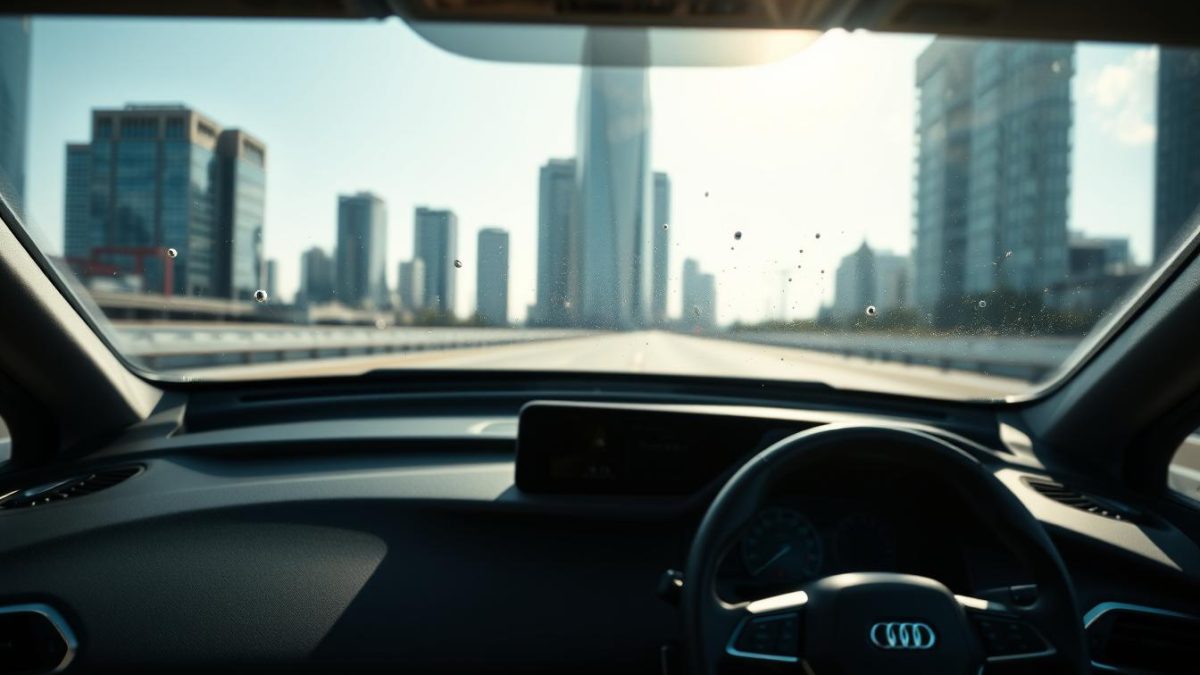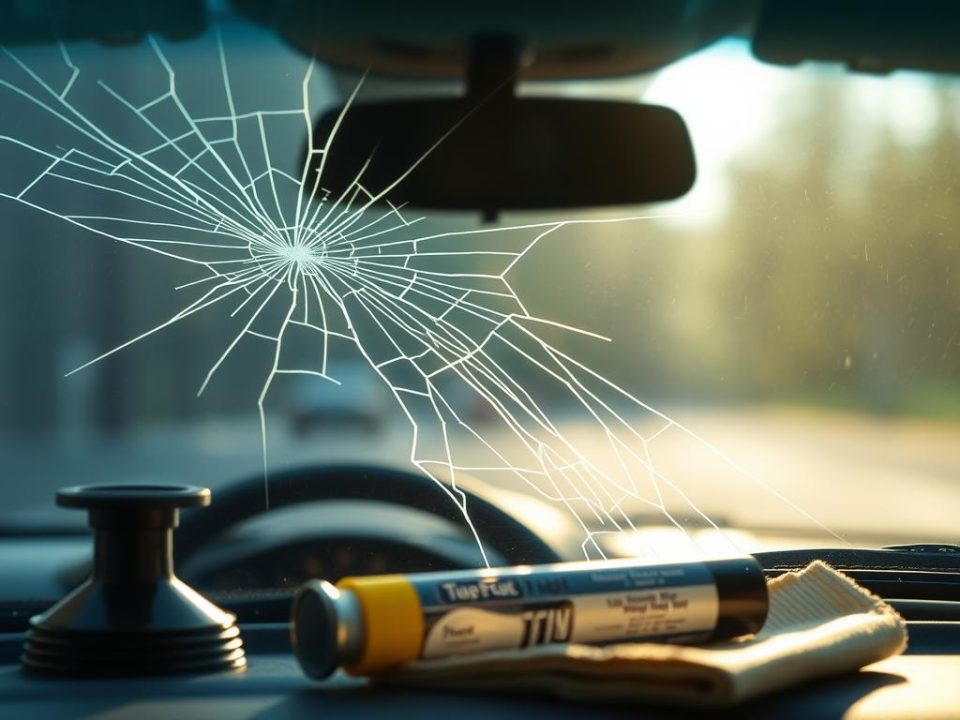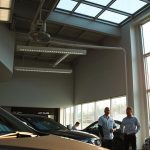
Best Times of Year to Get Windshield Deals in San Antonio

How to Keep Your Rear Windshield Defroster Working Properly
Modern vehicles are increasingly equipped with sophisticated technology known as Advanced Driver Assistance Systems (ADAS), enhancing safety and driving experience. These systems rely on cameras and sensors mounted on or near the windshield to monitor the environment around the vehicle and provide critical information to the driver.
If the windshield is not installed correctly, the cameras that power ADAS features can end up being out of alignment, compromising the functionality of safety systems. Companies like Miracle Auto Glass understand the importance of precise positioning and calibration of these components during windshield replacement.
Key Takeaways
- Proper windshield replacement is crucial for maintaining ADAS functionality.
- ADAS relies on cameras and sensors mounted on or near the windshield.
- Incorrect installation can compromise vehicle safety features.
- Professional expertise is essential for windshield replacement in modern vehicles.
- Miracle Auto Glass ensures proper calibration and installation.
Understanding ADAS Technology and Its Connection to Auto Glass
The advent of Advanced Driver Assistance Systems has marked a significant shift in automotive safety. ADAS technology has become integral to modern vehicles, enhancing safety on the roads.
What Are Advanced Driver Assistance Systems?
Advanced Driver Assistance Systems (ADAS) represent a significant evolution in automotive safety technology. These systems utilize a network of cameras and sensors to monitor driving conditions, serving as an additional set of eyes for drivers. ADAS includes features like lane departure warnings and forward collision alerts.
How ADAS Systems Enhance Vehicle Safety
ADAS systems enhance vehicle safety by providing drivers with real-time information and, in some cases, automatically intervening to prevent collisions. The strategic placement of ADAS cameras
Understanding how these systems function highlights the importance of proper maintenance and professional replacement of auto glass components to ensure continued safety.
The Critical Relationship Between Auto Glass and ADAS Systems
The integration of ADAS components within the windshield has revolutionized vehicle safety, making auto glass a crucial element. The windshield serves as a mounting point for various cameras and sensors that are essential for the proper functioning of ADAS systems.
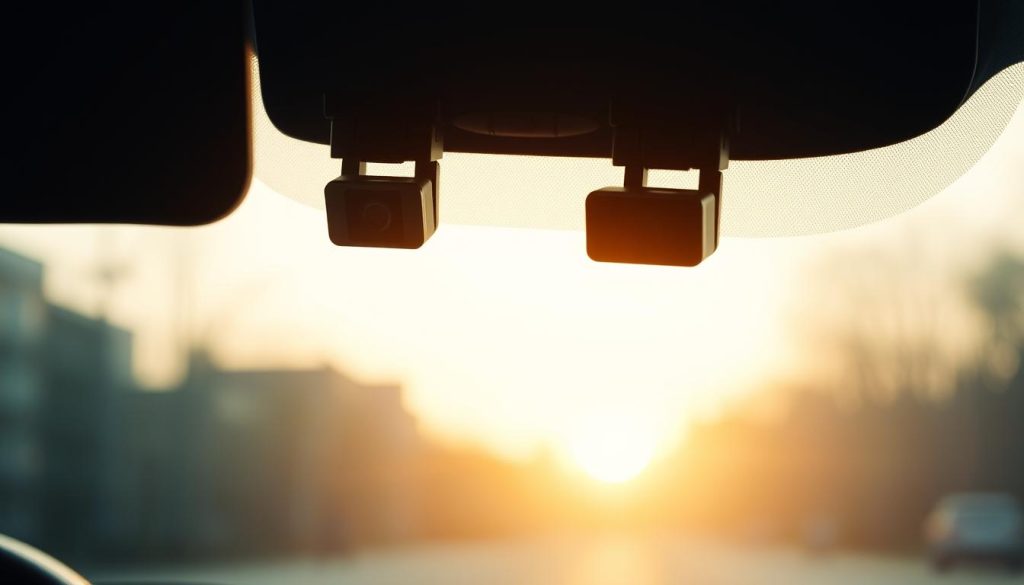
Windshield-Mounted ADAS Components
Most ADAS cameras and sensors are strategically mounted on the windshield to provide optimal visibility of the road and surroundings. This makes the glass an integral part of the safety technology. Manufacturers design specific mounting locations for ADAS components with precise angles and positions to ensure accurate data collection and processing.
How Windshield Damage or Replacement Affects ADAS Functionality
When windshield damage occurs, it can directly impact the positioning and functionality of these sensitive components, potentially compromising safety features. Even minor adjustments in camera or sensor alignment during windshield replacement can significantly affect how ADAS systems interpret road conditions and potential hazards. Therefore, proper calibration of ADAS systems after windshield replacement is crucial to maintain system accuracy.
Common ADAS Features That Rely on Windshield-Mounted Technology
Windshield-mounted cameras and sensors play a crucial role in the functioning of various ADAS features found in today’s vehicles. These features are designed to enhance safety and reduce the risk of accidents on the road.
Lane Departure Warning and Lane Keep Assist
Lane Departure Warning (LDW) systems use cameras to monitor road markings and alert drivers when they unintentionally drift out of their lane. Lane Keep Assist (LKA) takes this technology further by actively steering the vehicle back into the proper lane position when drift is detected without a turn signal.
Forward Collision Warning and Automatic Emergency Braking
Forward Collision Warning (FCW) systems utilize windshield-mounted cameras and radar to monitor the distance between vehicles, alerting drivers when they’re approaching preceding vehicles too quickly. Automatic Emergency Braking (AEB) works in conjunction with FCW systems to apply brakes automatically if the driver fails to respond to collision alerts.
Adaptive Cruise Control and Other Safety Features
Adaptive Cruise Control (ACC) maintains a safe following distance by automatically adjusting vehicle speed based on traffic conditions detected by windshield-mounted sensors. Other safety features like traffic sign recognition, automatic high beam control, and pedestrian detection also rely on properly positioned and calibrated windshield cameras.
Why ADAS Calibration Is Essential After Windshield Replacement
Proper ADAS calibration following windshield replacement is vital for the effective operation of safety systems. Advanced Driver Assistance Systems (ADAS) rely on cameras and sensors mounted on the windshield to function correctly. When a windshield is replaced, these components can become misaligned, necessitating recalibration to ensure accurate data collection and relay to the vehicle’s safety systems.
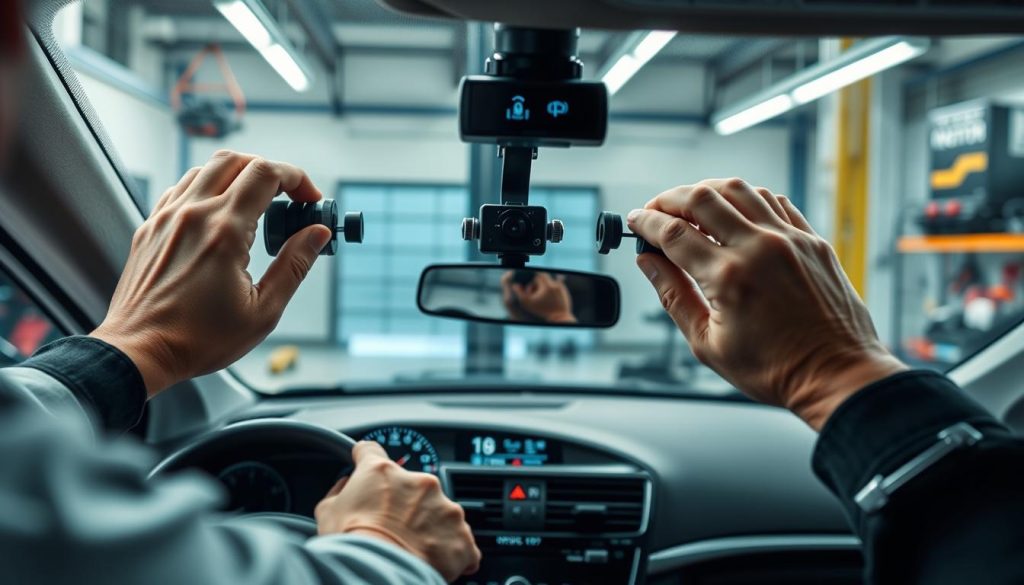
Safety Risks of Improperly Calibrated Systems
Improperly calibrated ADAS cameras and sensors can lead to inaccurate data being sent to the vehicle’s safety systems. This inaccuracy can result in false alerts or, more critically, the failure to detect actual hazards on the road. Even minor misalignments, sometimes as little as a few millimeters, can significantly impact the effectiveness of safety features like automatic emergency braking or lane keep assist. Ensuring that ADAS components are correctly calibrated after windshield replacement is crucial for maintaining vehicle safety.
- Inaccurate data from misaligned cameras and sensors can compromise safety features.
- Minor misalignments can have significant impacts on safety system effectiveness.
- Proper calibration is essential to maintain the vehicle’s designed safety parameters.
Manufacturer Requirements for ADAS Calibration
Vehicle manufacturers specify strict requirements for ADAS calibration following windshield replacement. These requirements are designed to ensure that safety systems function according to their design parameters. Most manufacturers explicitly state that ADAS calibration must be performed after windshield replacement to maintain warranty coverage. Professional calibration ensures that cameras and sensors are precisely aligned to manufacturer specifications, thereby restoring the system’s ability to accurately detect road conditions and potential hazards.
Key considerations include:
- Adhering to manufacturer-specified calibration procedures.
- Ensuring that all safety systems work harmoniously.
- Maintaining warranty coverage through proper calibration.
Types of ADAS Calibration Procedures
The calibration of ADAS is a critical process that involves two primary methods: static and dynamic calibration. These procedures are essential to ensure that the cameras and sensors associated with Advanced Driver Assistance Systems are properly aligned and functioning correctly after windshield replacement.
Static Calibration: Process and Requirements
Static calibration is performed in a controlled environment with the vehicle stationary. It utilizes specialized equipment, including calibration targets positioned at precise distances and angles from the vehicle, to ensure that cameras and sensors are aligned according to the manufacturer’s specifications. This process requires a level surface, specific lighting conditions, and exact measurements.
Dynamic Calibration: Process and Requirements
Dynamic calibration involves driving the vehicle under specific conditions while specialized diagnostic equipment monitors and adjusts sensor alignment in real-time. This procedure typically requires driving at consistent speeds on well-marked roads for a specified period, allowing the system to self-calibrate while technicians monitor the process.
Both static and dynamic calibration are crucial for ensuring the proper functioning of ADAS. The type of calibration required depends on the vehicle’s make, model, year, and the specific ADAS features installed. Many vehicles require both static and dynamic calibration to ensure complete system functionality.
The Professional Expertise Required for Proper ADAS Calibration
The precise calibration of ADAS features is crucial for vehicle safety and relies on expert technicians. Advanced Driver Assistance Systems have become a standard safety feature in modern vehicles, and their proper functioning is essential for preventing accidents.
Specialized Equipment and Training
Professional auto glass technicians undergo extensive training to understand the intricacies of different ADAS systems across various vehicle makes and models. They have access to the latest technical information and manufacturer specifications needed for proper calibration. The calibration process often requires specialized facility conditions, including level floors and controlled lighting.
- Manufacturer-specific calibration targets and diagnostic tools are necessary for accurate ADAS recalibration.
- Professional technicians can perform diagnostic testing before and after calibration to verify that all systems are functioning correctly.
- The complexity of modern vehicle systems demands specialized knowledge and training for proper ADAS camera alignment.
Why DIY Windshield Replacement Isn’t Recommended for ADAS-Equipped Vehicles
DIY windshield replacement on ADAS-equipped vehicles poses significant safety risks, as improper installation or missed calibration can compromise critical safety features. The time investment for proper calibration is substantial, with some vehicles requiring several hours to complete the process correctly.
To ensure driver safety, it is recommended to rely on professional technicians for ADAS recalibration and auto glass repair. They have the necessary expertise and equipment to perform the task correctly, ensuring that the vehicle’s safety features function as intended.
Conclusion: Ensuring Your Safety with Professional Windshield Replacement
As vehicles become increasingly reliant on Advanced Driver Assistance Systems (ADAS), the importance of proper windshield replacement cannot be overstated. Modern vehicles rely on ADAS features to alert drivers to potential hazards and prevent accidents.
Professional windshield replacement ensures that all safety features continue to function as designed, protecting drivers and passengers on the road. It’s essential to choose an auto glass repair service with expertise in ADAS calibration and the proper equipment.
Miracle Auto Glass specializes in professional windshield replacement and ADAS calibration, ensuring your vehicle’s safety systems remain fully functional. Don’t compromise on safety—contact Miracle Auto Glass today to schedule your windshield replacement and ADAS calibration.

